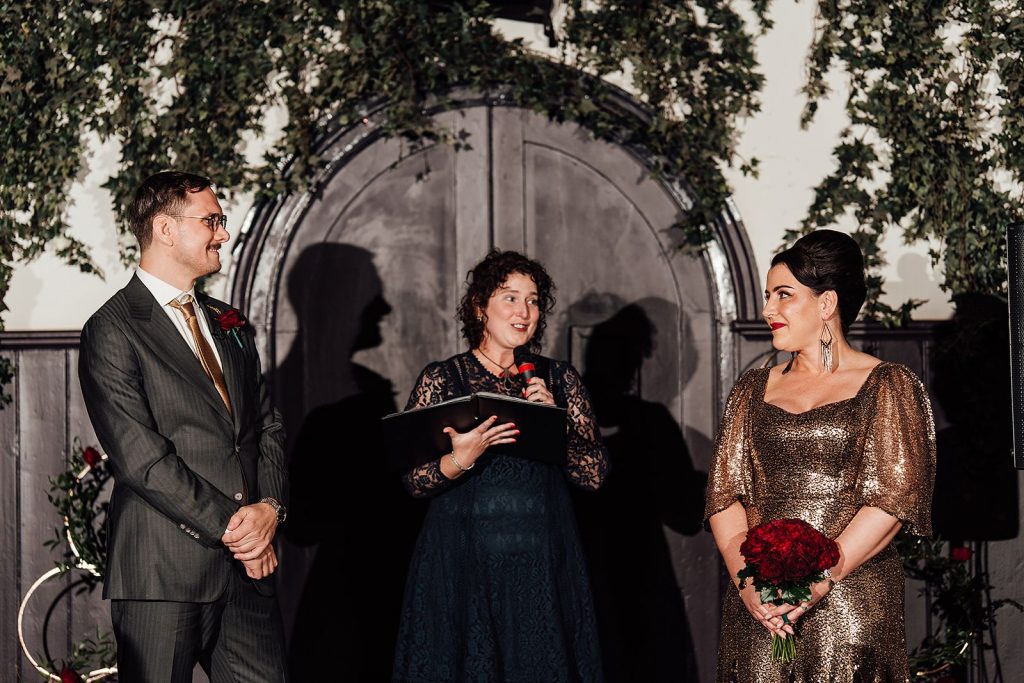Components of a Ceremony
While there are some legal elements that are required to legalise a marriage, many elements and rituals are optional and I’ll work with you to help you decide which ones you would like to include as part of your ceremony.
A ceremony is usually made up of the below components. The items that are in bold below are legally required but all others are optional.
- Acknowledgement of country (where I’ll acknowledge the traditional owners of the land) and/or Welcome to Country (where Aboriginal or Torres Strait Islander Traditional Owners welcome others to the land of their ancestors)
- General housekeeping before the ceremony (recommended): this is where I’ll announce your phone/photo policy and give people any extra info they may need.
- Processional (or Bridal March). The Bridesmaids enter, followed by the Bride/s and the person who is giving her/them away (if that’s what you choose to do – we can find other ways of acknowledging people that are important to you throughout the ceremony as well)
- Some words about your story: what marriage means to you, why everyone is gathered together to celebrate your union.
- Reading/s (verses or poetry)
- Monitum (from the Marriage Act and said by the Celebrant in accordance with the Marriage Act.)
- Legal Vows
- Vows (in addition to the legal vows – these are the fun ones that you write yourselves, I can help with this too)
- The asking (the “I Do” part)
- Ring exchange
- The pronouncing (eg: “I now pronounce you….”)
- Signing of the register
- Any rituals you may like to do
- Conclusion
- Congratulations and the announcement of the newly married couple
- Recessional / all over!



